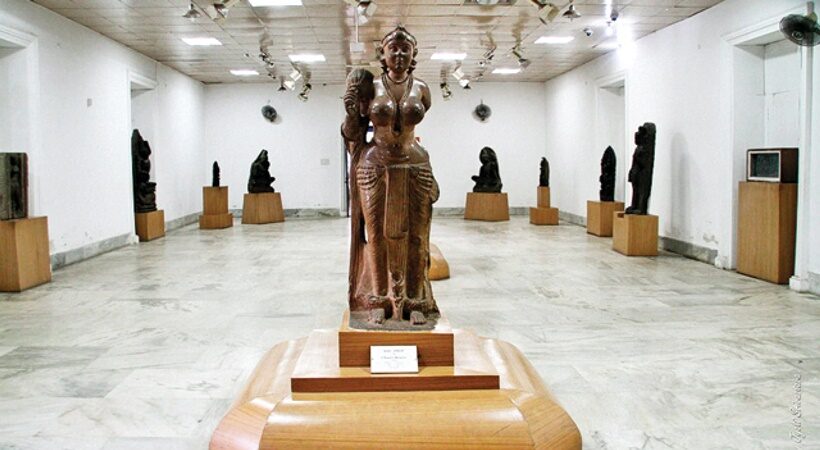Didargunj Yakshi is one of the finest examples of early stone sculpture in ancient India. However, the discovery of the sculpture is shrouded in mystery. There are two conflicting versions of its discovery. However, it is the official version recorded in a police report that has captured the imagination of its admirers. According to the report, for many years the dhobis used to wash clothes on a slab, sticking out of the earth, on the banks of Ganges in Didargunj. One day a snake appeared in its vicinity and the villagers chased it to a hole near the slab. In order to kill the snake, the villagers dug up the slab, which was actually the pedestal of a stunning statue. Stunned by the beautiful sculpture, the villagers took out the statue and reconsecrated it as a Goddess (Devi). Once it caught the attention of authorities and archaeologists, the sculpture was named “Didargunj Yakshi” and was moved to the newly constructed Patna museum.

The sculpture of Didargunj Yakshi is known for its magnificent construction and the depiction of near-perfect standards of the feminine beauty of ancient India. Yakshas and Yakshis were extremely old local spiritual deities rooted in the folk traditions of ancient India, which were co-opted by Buddhism, Jainism and Brahmanism. Dated back to approximately the 3rd century BCE, Didargunj Yakshi is one of the oldest sculptures from South Asia with such well-developed characteristics. The statue is carved out of a single stone block from the Chunar sandstone. Chunar sandstone was sourced from a small village near Varanasi and is known for its widespread use in ancient Indian art, especially in the Mauryan period.
The sculpture shines like a mirror and was decked up with the meticulous process of the Mauryan polish. Her figure is voluptuous with a full bust, slender at the waist and wide at the hips. The Yakshi stoops slightly forward instead of standing upright, seeking a posture of humility. The smile on her lips is elusive, yet hauntingly sweet. The design of her right leg is slightly bent as if due to the weight of the fly-whisk she is holding and the firmness of her grip on the chauri, all these show the delicacy of rendition in detailing. It is for this reason that the sculpture has also been named the Chauri Bearer. It is a figure in the round, which means it can be viewed from all angles. Its stunning beauty has enchanted viewers around the world for the past century and Didargunj Yakshi has become one of the most prolific artefacts in the subcontinent. The sculpture was one of the first attempts to capture the organic form of the human body in Indian art tradition.



















